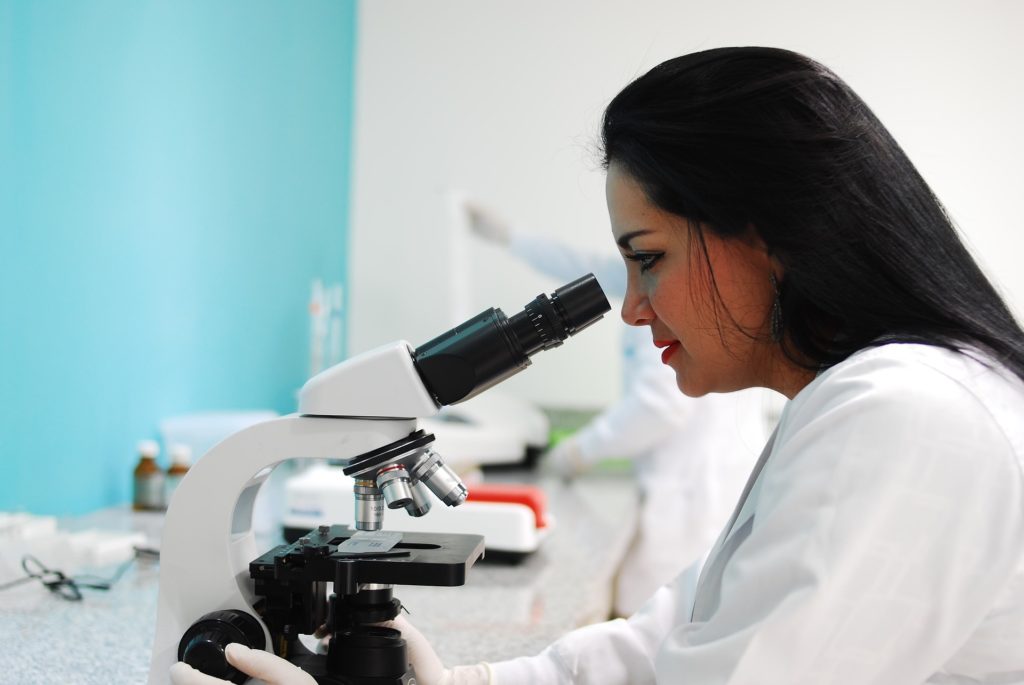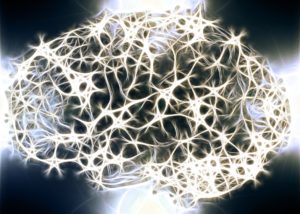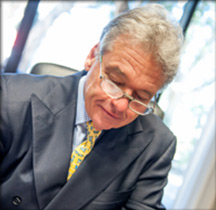
Nearly 200 million people use cannabis yearly, according to the World Health Organization and other experts worldwide. Scientists have been trying to demonstrate safety and efficacy for cannabis or a component of the marijuana plant. It has not been easy.
Indeed, marijuana is widely used for a reason, but whether that proves it is medicine is another story, alcohol comes to mind. In 1985, long before cannabis was declared a medicine by ballot initiative or amendment, THC products (dronabinol and nabilone), were approved by the FDA for chemotherapy-induced nausea and vomiting. Dronabinol was also approved for appetite stimulation in wasting conditions, such as AIDS, in 1992.
More recently, a third cannabinoid, CBD, was approved by the FDA in 2018 for the treatment of two forms of pediatric epilepsy, Dravet syndrome and Lennox-Gastaut syndrome. CBD is 1 of approximately 140 cannabinoids identified in the cannabis plant.
While cannabis may be used in some States as a “medicine" and others for "recreational purposes" and is still used illicitly in all States, it is not clear what exactly is being ingested, smoked, or taken. Additionally, any FDA approval will naturally follow positive, rigorous, randomized, controlled trials. The good news is that CBD, a prevalent active ingredient of the cannabis plant, appears to be safe.
The full mechanism of CBD's pharmacologic actions is still being studied in the laboratory. What is clear is that CBD does not bind strongly to the endogenous cannabinoid type 1 and type 2 receptors as THC does. THC, the main psychoactive component of cannabis, exerts its reinforcing and high-producing effects this way.
This balancing act between CBD and THC in marijuana is fundamental to understand. CBD one of the hundreds of components of marijuana. It does not, by itself, it does not cause a "high."CBD/THC ratio is vital to understand and, in my opinion, put on the label of products sold. The highest CBD/THC ratio is in hemp strains, which contain less than 0.3% THC. CBD might reduce the dangers of THC or have other effects.
 Concentrations and ratios of delta-9-tetrahydrocannabinol (THC), the principal psychoactive component in cannabis, and cannabidiol (CBD) are essential to consider. These ratios can change metabolism and whether there are any mood, behavior, or therapeutic effects at all when cannabis is smoked.
Concentrations and ratios of delta-9-tetrahydrocannabinol (THC), the principal psychoactive component in cannabis, and cannabidiol (CBD) are essential to consider. These ratios can change metabolism and whether there are any mood, behavior, or therapeutic effects at all when cannabis is smoked.
Absolutely no States which have legalized medical or recreational marijuana post of insisting on considering ratios THC: CBD in regulations [1]. Even in government licensed and supervised shops, there is not a transparent reporting of CBD/THC ratio, wide variability, and a lack of medicinal testing.
According to a report from the World Health Organization, "In humans, CBD exhibits no effects indicative of any abuse or dependence potential…. To date, there is no evidence of public health-related problems associated with the use of pure CBD." CBD stands for cannabidiol. While CBD is an essential component of medical marijuana, it is derived directly from the hemp plant, which is a cousin of the marijuana plant. In an era where states are pushing cannabis policy ahead of the science, CBD's purity should be clear and quantified.
CBD is a cannabis component that does not produce a "high" like the psychoactive cannabis component cousin called THC-tetrahydrocannabinol. The U.S. Food and Drug Administration (FDA)‐approved the first CBD pharma product called Epidiolex.
Addiction researchers were very interested in CBD as it was not a drug of abuse in the lab or with patients. Still, marijuana is a common drug used by patients in opioid use disorder programs. Some OUD Medication-Assisted Treatment programs do not even test or ask about marijuana because use is so widespread.
Dr. Jasmine Hurd and her colleagues at Mt Sinai in NYC helped to re-frame the anecdotal literature that marijuana use decreases complaints during opioid withdrawal and may decrease opioid withdrawal distress and relapse. In a well designed, randomized, and controlled study that acute CBD administration, in contrast to placebo, significantly reduced both craving and anxiety, which was provoked or caused by drugs or drug cues compared with neutral cues.
CBD also showed clinically relevant and important effects on these measures seven days after the final short-term (3-day) CBD exposure. CBD had these important effects on thinking and emotions, but it also changed the body's responses to these stressors. CBD reduced the drug cue-induced physiological measures of heart rate and salivary cortisol levels. There were no serious adverse effects.
CBD's safety and efficacy on this relevant complaint is all excellent news. Keep in mind, craving, anxiety, and other cue related events often trigger hopelessness, despair, and relapses. CBD's reduction in cue-induced craving and anxiety suggests that this phytocannabinoid may stand the test and seizure disorders, be approved by the FDA as an adjunct for the treatment of opioid use disorder[2].
Who makes the CBD and what it consists of, makes all the difference. Without a bonafide laboratory verification, it is impossible to know whether the labeled CBD dosage is the dose. The best example of just how important this is is the pharmaceutical CBD for two severe forms of childhood epilepsy, Dravet syndrome and Lennox-Gastaut syndrome.
These epilepsies do not respond well to other medications. Vitamin supplement like or Artisanal CBD is manufactured using varying techniques and contains variable amounts of CBD and THC. Pharmaceutical CBD is just precisely what the label says that it is.
 Children and teens with epilepsy who were treated with pharmaceutical cannabidiol (CBD) [3] had much better seizure control than those who were given generic or artisanal CBD. Those taking artisanal CBD had an average level of CBD in the blood of 31 nanograms per milliliter (ng/mL) compared to 124 ng/mL for those taking pharmaceutical CBD.
Children and teens with epilepsy who were treated with pharmaceutical cannabidiol (CBD) [3] had much better seizure control than those who were given generic or artisanal CBD. Those taking artisanal CBD had an average level of CBD in the blood of 31 nanograms per milliliter (ng/mL) compared to 124 ng/mL for those taking pharmaceutical CBD.
Researchers found children and teens taking artisanal CBD had a 70% increase in seizures during the study. Those taking prescription CBD had a 39% reduction in seizures.
Naturally, this is quite confusing. Pharmaceutical CBD is now approved for two different seizure disorders and being tested for other Pediatric Neurological conditions. Now, we may be adding to that substance use or opioid use disorders, craving, and anxiety.
Beyond the indications for which cannabinoids are FDA-approved, the best evidence appears to be for chronic pain (including neuropathic pain) Acute CBD dosing before anxiety‐provoking events like public speaking and the use of CBD in schizophrenia are promising but far from proven. At the same time, we have CBD products created like vitamins for medical marijuana dispensaries, smoke shops, convenience stores, and all over the internet as this or that CBD-containing product.
CBD is a household name and business with a market value of more than $70 billion. All of this marketing and enthusiasm emerged during the past decade. Thousands of CBD-related products are sold through the internet, pharmacies, large national retail stores, boutique shops, coffee shops, massage parlors, and by street vendors. Some have CBD, but how much?
Some also have THC and other drugs of abuse. It is hard to believe all of these claims, without science or data. Cannabidiol (CBD) is a wonder drug, safe, and useful for these rare seizures, as the FDA approval demonstrates. It may well have other essential uses, and the FDA will approve them too, once the data is presented of safety, efficacy, dose, and so on.
Until then, temper your enthusiasm for CBD as the new wonder drug, proposed as medicine for ulcerative colitis, anorexia nervosa, cancer, depression, anemia, depression, sleep disorders, neurodegenerative disorders, pain, and the list goes on.
Recent findings that marijuana causes new mental disorders in otherwise healthy people highlight the potential risks associated with the use of cannabis and other cannabinoids that contain THC for recreational or therapeutic purposes[4]. Marijuana and several cannabinoid-based medications have potentially concerning side effect profiles that may limit their use in specific patient populations. [5]
A single THC administration induces psychotic, negative, and other psychiatric symptoms with large effect sizes. There is no consistent evidence that CBD produces symptoms or but can, depending on concentrations, moderate some of the effects of THC. CBD, on the other hand, is safe, even safe for patients with SUDs. CBD is safe, generally well-tolerated, lacks toxicity, and is nonintoxicating with no reinforcing properties.
 The daily dose range mainly studied is approximately 100 to 600 mg (usually taken orally), but doses even up to 6000 mg investigated in healthy individuals resulted in no severe effects. The most notable adverse events are gastrointestinal, including diarrhea. CBD has been shown to alter liver function tests and needs further study to look for other side effects and drug interactions. [6]
The daily dose range mainly studied is approximately 100 to 600 mg (usually taken orally), but doses even up to 6000 mg investigated in healthy individuals resulted in no severe effects. The most notable adverse events are gastrointestinal, including diarrhea. CBD has been shown to alter liver function tests and needs further study to look for other side effects and drug interactions. [6]
CBD has a bright future, and many uses as a Medicine may be proven. The pathway that led to CBD approval FDA in 2018 for the treatment of two forms of pediatric epilepsy, Dravet syndrome, and Lennox-Gastaut syndrome, seems to be worth keeping in mind. CBD may have efficacy in certain pain syndromes, autoimmune diseases, anxiety, sleep, and craving for drugs, but random assignment, double-blind FDA qualifying trials are needed to prove it.
Pharmaceutical CBD and CBD used for research are pure and safe, CBD sold in various commercial products is not always CBD in the amount expected or pure. At a minimum, products should have proper manufacturing control, standardized testing, and accurate labeling of the contents supported by clear evidence of such quality controls. [7]
Some users of CBD had also failed drug tests when the product contained more THC than indicated. Overall, CBD did not display any signals of abuse liability at the doses tested, and these data may help inform U.S. regulatory decisions regarding CBD schedule[8]
References:
1. Zeyl V, Sawyer K, Wightman RS. What Do You Know About Maryjane? A Systematic Review of the Current Data on the THC: CBD Ratio. Subst Use Misuse. 2020 Mar 3:1-5. doi: 10.1080/10826084.2020.1731547. [Epub ahead of print]
2. Hurd YL1, Spriggs S1, Alishayev J1, Winkel G1, Gurgov K1, Kudrich C1, Oprescu AM1, Salsitz E1. Cannabidiol for the Reduction of Cue-Induced Craving and Anxiety in Drug-Abstinent Individuals With Heroin Use Disorder: A Double-Blind Randomized Placebo-Controlled Trial. Am J Psychiatry. 2019 Nov 1;176(11):911-922. doi: 10.1176/appi.ajp.2019.18101191. Epub 2019 May 21.
3. https://www.aan.com/PressRoom/Home/PressRelease/3775
4. Hindley G, Beck K, Borgan F, Ginestet CE, McCutcheon R, Kleinloog D, Ganesh S, Radhakrishnan R, D'Souza DC, Howes OD, Psychiatric symptoms caused by cannabis constituents: a systematic review and meta-analysis. Lancet Psychiatry. 2020 Apr;7(4):344-353. doi: 10.1016/S2215-0366(20)30074-2. Epub 2020 Mar 17.
5. Levinsohn EA, Hill KP.Clinical uses of cannabis and cannabinoids in the United States. J Neurol Sci. 2020 Apr 15;411:116717. doi: 10.1016/j.jns.2020.116717. Epub 2020 Jan 30.
6. https://doi.org/10.1002/jcph.1387
7. doi:10.1001/jamapsychiatry.2019.4157
8. Babalonis S1, Haney M2, Malcolm RJ3, Lofwall MR4, Votaw VR5, Sparenborg S6, Walsh SL4.Oral cannabidiol does not produce a signal for abuse liability in frequent marijuana smokers. Drug Alcohol Depend. 2017 Mar 1;172:9-13. doi: 10.1016/j.drugalcdep.2016.11.030. Epub 2016 Dec 14.
About the Author:
 Mark S. Gold, M.D. served as Professor, the Donald Dizney Eminent Scholar, Distinguished Professor and Chair of Psychiatry from 1990-2014. Dr. Gold was the first Faculty from the College of Medicine to be selected as a University-wide Distinguished Alumni Professor and served as the 17th University of Florida’s Distinguished Alumni Professor. Learn more about Mark S. Gold, MD
Mark S. Gold, M.D. served as Professor, the Donald Dizney Eminent Scholar, Distinguished Professor and Chair of Psychiatry from 1990-2014. Dr. Gold was the first Faculty from the College of Medicine to be selected as a University-wide Distinguished Alumni Professor and served as the 17th University of Florida’s Distinguished Alumni Professor. Learn more about Mark S. Gold, MD
The opinions and views of our guest contributors are shared to provide a broad perspective of addictions. These are not necessarily the views of Addiction Hope, but an effort to offer a discussion of various issues by different concerned individuals.
We at Addiction Hope understand that addictions result from multiple physical, emotional, environmental and genetic factors. If you or a loved one are suffering from an addiction, please know that there is hope for you, and seek immediate professional help.
Published on April 7, 2020
Reviewed by Jacquelyn Ekern, MS, LPC on April 7, 2020
Published on AddictionHope.com
